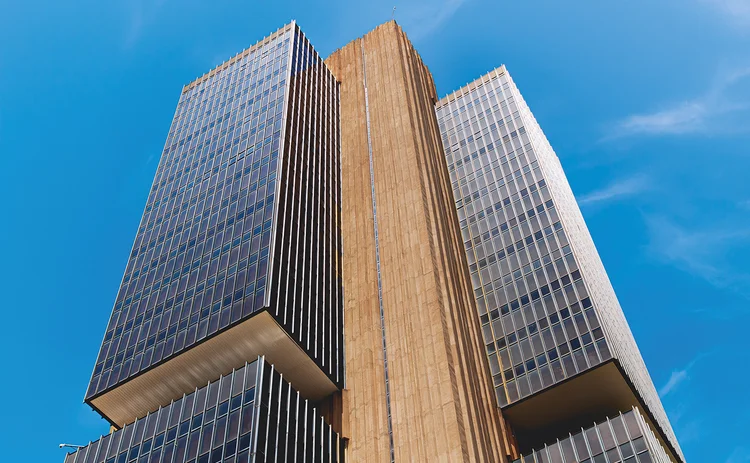
Payments and market infrastructure development – retail: Central Bank of Brazil’s Pix
Implementation of Pix real-time payment system in Brazil was runaway success

There are many brands associated with payments, some of them now included as standalone verbs. They are set to be joined by ‘Pix’ – the term used for the Brazilian real-time payment system spearheaded by the Central Bank of Brazil (BCB).
The Brazilian central bank first created a working group to develop Pix back in May 2018, moving to establish the open platform in 2019 and formally launching it on November 16, 2020. Work continued progressively in 2021 to further develop the system. Pix was integrated with phone books and phone numbers from contacts, invoice payments and scheduled transactions were added, and cash withdrawal capabilities and a special refund mechanism introduced.
The BCB established the governance principles for the system, which is aimed at serving society and increasing market efficiency. To do this, it established a comprehensive set of regulations, and addressed risks, obligations and participation in the scheme, while striving to reduce barriers to entry. Notably, non-banks were admitted into the payment scheme.
The BCB is also responsible for the management and operation of the Pix architecture, including the instant payment system and the transaction accounts identifier directory – the database linking Pix keys and users’ transactional account information. Pix keys can include emails, phone numbers, social security numbers and randomly generated numbers. The BCB also introduced a detailed rule book aimed at ensuring participants conform to standards for compliance, duties, service level agreements, user experience, costs and fees.
A strong communications campaign was also unleashed to drive Pix adoption. In particular, the central bank has used straightforward language in audiovisual communications aimed at ordinary people – for example, to show a street salesperson or pensioner how they could use the new instant payment system.
The combination of these efforts resulted in the creation of 395. 2 million Pix keys by January 2022 (Brazil has a population of 215 million). The BCB says 62% of adults and 54% of companies in Brazil now use Pix, which it claims is the quickest national adoption of a payment system in the world as measured by transactions per capita. Of all its transactions in January, 72% were person-to-person. Meanwhile, 72.5% of transactions used a Pix key, 16.4% were from manual insertion of details, 7.8% were from dynamic QR codes, with the rest mostly comprising static QR codes.

“Once they built the rails, in under 12 months, [Pix] supported 100 million users and 1 billion monthly transactions,” Jackie Reses, chairman of the Economic Development Council at the Federal Reserve Bank of San Francisco, told the US Monetary Policy Forum in February 2022. “That includes 40 million people who used the platform to make their first ever bank transfer. India saw similar success, albeit on a slower timeline.”
Pix usage is spread across Brazil’s demographics, but is most active among those in their 20s, 30s and 40s. In December 2021, usage was: 5% for people aged 19 or under; 34% among those in their 20s; 31% for people in their 30s; 18% for those in their 40s; 8% for people in their 50s; and 4% for those over 60.
There were 774 participants in Pix as of the end of January 2022 – of which 611 were credit co-operatives, 73 were payment institutions, 64 were types of bank, with the remainder including credit societies, and association and government entities. Any payment service provider (PSP) with more than half a million active customers is legally required to join Pix. All other banks and non-banking PSPs can join, as overseen by the central bank. The BCB says that more than 80 institutions are in the process of joining. By opening the payment system to smaller financial institutions outside the traditional two-tiered banking system, the Central Bank of Brazil has encouraged financial inclusion and rapid market adoption. To encourage further inclusion, individuals are not charged fees for Pix transactions.
More than 1 billion Pix transactions take place per month, with 50 million transactions – the highest daily total so far – occurring on November 5. A total of 45.6 million Pix participants did not previously use Ted, a common credit transfer mechanism in Brazil, in the year prior to Pix’s launch. The Central Bank of Brazil says that this demonstrates the ease of using Pix and its ability to support financial inclusion.
Security
Despite its successes, the Pix system has faced some problems. For example, criminals have forced payments to be made during kidnappings, particularly in high-crime areas such as São Paulo and Rio de Janeiro. But the BCB says other payment methods bear a similar risk, and the rise in kidnappings reflects an overall increase in violent crimes after a period when victims were typically isolated at home during the pandemic.
Some practical steps have been taken to discourage such kidnappings. These include introducing upper limits on fund transfers between individuals at night, although higher upper limits can be obtained through registration. The central bank’s goal was to decrease the upper limit, to act as a deterrent to criminals, while still facilitating most transactions. Internal studies from the BCB found that 95% of transactions occurred beneath this upper limit.
The BCB has run a dedicated secure proprietary network since 2002 without any security breaches, and uses “multiple embedded security devices” to protect against fraud, with the central bank supervising and regulating PSPs’ interactions in the network. The central bank said that it has contingency plans in place for each provider. Indirect payment service providers operate on a ‘sub-layer’, and they can query Pix keys and settle transactions only through direct PSPs.
The BCB believes that the login function required to enter Pix is already a marked security improvement compared with credit and debit cards. Depending on the app and the PSP, logins may require face scans, passwords, biometrics or two-factor authentication.
The overall success of Pix has attracted plenty of attention from its neighbours. “We were impressed with the introduction of a fast payment system in Brazil last year. We hope that we can develop in a similar way,” Central Bank of Uruguay governor Diego Labat tells Central Banking.
In the future, the Pix team is looking to create cross-border, contactless and offline payment capabilities.
The Central Banking Awards were written by Christopher Jeffery, Daniel Hinge, Dan Hardie, Victor Mendez-Barreira, Ben Margulies and Riley Steward
Only users who have a paid subscription or are part of a corporate subscription are able to print or copy content.
To access these options, along with all other subscription benefits, please contact info@centralbanking.com or view our subscription options here: subscriptions.centralbanking.com/subscribe
You are currently unable to print this content. Please contact info@centralbanking.com to find out more.
You are currently unable to copy this content. Please contact info@centralbanking.com to find out more.
Copyright Infopro Digital Limited. All rights reserved.
As outlined in our terms and conditions, https://www.infopro-digital.com/terms-and-conditions/subscriptions/ (point 2.4), printing is limited to a single copy.
If you would like to purchase additional rights please email info@centralbanking.com test test test
Copyright Infopro Digital Limited. All rights reserved.
You may share this content using our article tools. As outlined in our terms and conditions, https://www.infopro-digital.com/terms-and-conditions/subscriptions/ (clause 2.4), an Authorised User may only make one copy of the materials for their own personal use. You must also comply with the restrictions in clause 2.5.
If you would like to purchase additional rights please email info@centralbanking.com test test test




